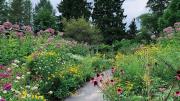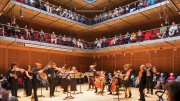At its blooming best during the summer, Weezie’s Garden for Children is an enchanting place for all ages. Stroll through the arched entrance of sculpted twigs, and wind along paths through this pollinators’ haven. Climb a tree-house tower, dig in the sandbox, look for nesting boxes, or follow the movement of fish and turtles in the pond below a rushing waterfall. It’s a place to roam and connect with nature at every step. Children “can run and hide, like little creatures, and be themselves, be free, and not have to worry about things,” says Massachusetts Horticultural Society (MHS) garden horticulturist Claudia Pollard. “They can really explore and get closer to plants, and touch and feel and smell flowers and ferns.”
This pint-sized paradise is a highlight of the MHS’s Gardens at Elm Bank, an 18-acre botanical refuge on the grounds of a former private estate in Wellesley, Massachusetts. The property lies within the state-owned Elm Bank Reservation, which offers its own adjacent trails that snake through the woods by the Charles River, along with places to picnic and play.
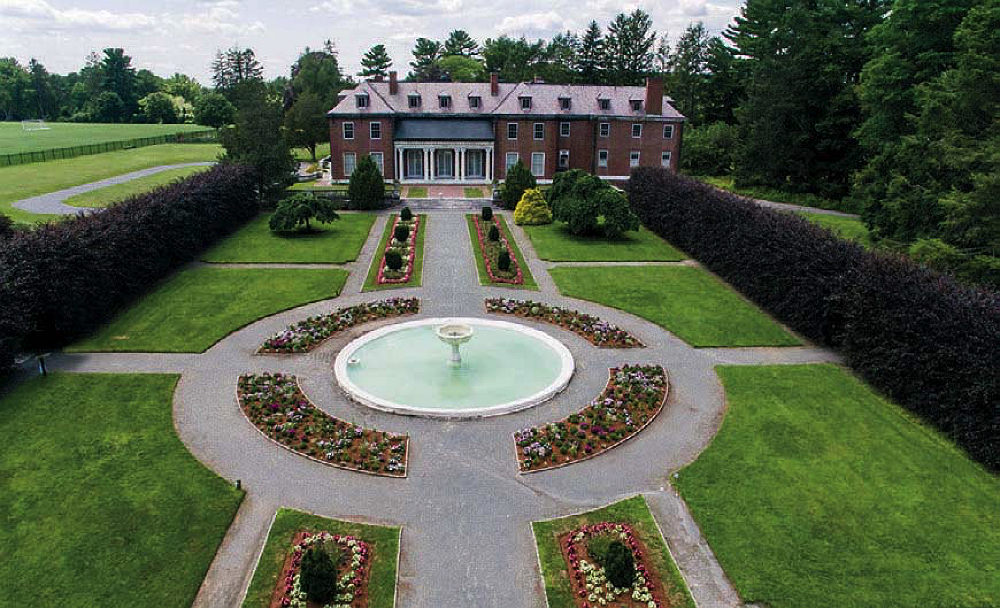
A long view of the Italianate Garden and 1907 manor
Photograph courtesy of the Massachusetts Horticultural Society
MHS’s “garden rooms” are spread across an idyllic, easily walkable landscape. At one end of the site is the 1907 manor house (closed to the public) once owned by Alice Cheney Baltzell, who inherited the property and a love of gardens from her father. She built the house, and hired Percival Gallagher, of the Olmsted Brothers firm, to design the adjacent grand Italianate Garden.. Its two looming Camperdown elms weregrafted from those in the original plan, and the central fountain is a fourteenth-century Spanish baptismal font Baltzell bought on her honeymoon. Neat rows of pruned copper beech trees frame the formal landscape, and a massive maple adds a flourish. Displays of annuals have typically filled out the flower beds, Pollard says, “but they take a lot of work and only last one season, so: not very sustainable.” This year, visitors should expect loads of perennials—lavenders, red valerian, bee balm, and bell flowers—but “for a bang of color,” she’ll scatter in frost-hardy annual lantanas as well.
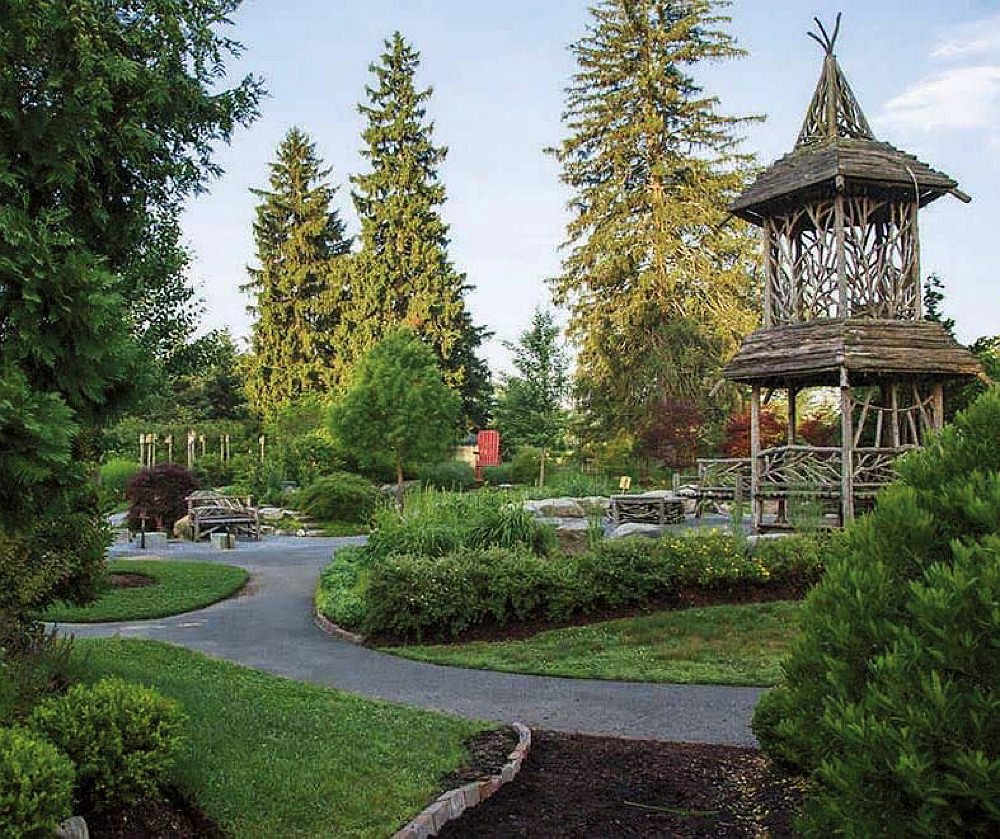
A charming twig tower draws kids and adults.
Photograph by William Sumner
Adjacent to the children’s area, the modern Bressingham Garden is a scaled-down version of the eponymous English landscape designed by plantsman Adrian Bloom. It highlights his pioneering aesthetic of perennial “drift plantings,” she says, so you can see what a plant looks like “when you don’t just put in one or two, but have an ocean of red and purple penstemons.” Bloom designed the MHS landscape in 2007, envisioning, as he did for his own Bressingham Gardens in Norfolk (established in the 1950s and ’60s), a garden of year-round interest; it grows naturally to offer a palette of shifting colors, textures, and foliage, anchored by conifers. “We’ve got tons of hummingbirds and goldfinches,” Pollard adds, “so it’s an active wildlife garden.”
This summer, visitors can stroll Bloom’s landscape, picnic, and lounge during the evening, too, as part of the “Music in the Garden” series. Performers include the Wellesley Symphony Orchestra (June 23), acoustic/rock duo Back Pages (July 7), the rock, blues, and Americana band Craig Carter and the Hurricane (July 21), and the Boston Opera Collaborative (August 19).
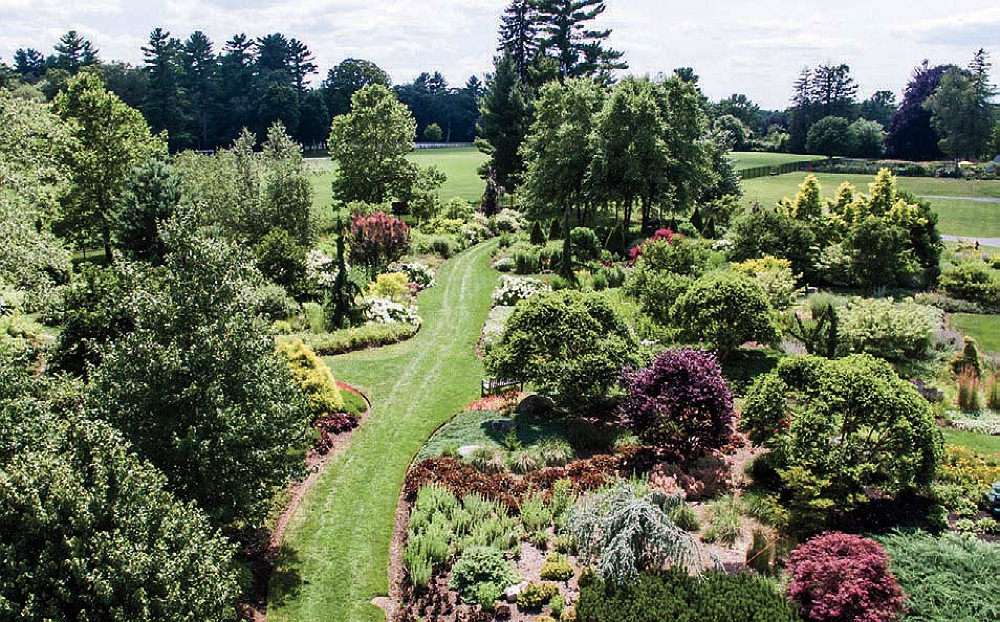
Paths meander throughout the scenic botanical landscape.
Photograph courtesy of the Massachusetts Horticultural Society
MHS, founded in 1829, has been a venerated institution long focused on fostering the public’s enjoyment of plants, as well as disseminating scientific and practical information on growing everything from agricultural crops to experimental exhibit specimens. But financial and leadership crises in the 1990s and early 2000s caused turmoil and a scramble to stay solvent. In hiring its new executive director and president, James Hearsum, in January 2020, MHS has been taking steps, he says, to become “more relevant.”
“Our mission,” he says, “is people. We want to achieve social and community outcomes, and horticulture is our means.” He points to data on the therapeutic benefits of parks and greenery, and community gardens, in cities; on the impact of gardens and live plants in senior centers; and of the personal rehabilitative effects of growing vegetables and flowers, including for ex-inmates and addicts in recovery, who are struggling to re-enter society. “There’s something about growing plants that’s transformational,” Hearsum says: “Even more than the purposefulness, it’s the innate connection to the actual work and the sense of result. You plant a lettuce seed and you get something to eat in four weeks. The importance is in the doing of it—the process. The physical joy of gardening.”
That vision, now planted, will take shape during the next few years. In revitalizing the long-derelict historic landscape designed by the Olmsted firm, for example, Hearsum isn’t planning to take the traditional approach: “Raise a lot of money and commission a landscape firm and construction company to install it, and open it to the public.” Rather, he sees the project as more of an organic effort by a team of staff members, volunteers, and professional collaborators. “Get people to do the vegetation management. Integrate the process within the community,” he says, so that “the gardens are the embodiment and expression of our work rather than the endpoint themselves.”
It’s an idea rooted in Hearsum’s past success as executive director of St. Andrews Botanic Garden, in Scotland. He became its CEO in 2014, and “had three years to turn it around, or shut it down,” he says. “Basically, we did well because we stopped being obsessed by the details of horticulture itself and catered to a broader audience. We used our garden to help people do what they needed to do in their lives.” But he’s no interloper: he began his career as a working gardener and nursery manager, earned a degree in horticulture, and studied practical horticulture and plantsmanship at the University of Cambridge and in the Longwood Graduate Program in Public Horticulture, affiliated with Longwood Gardens, in Pennsylvania.
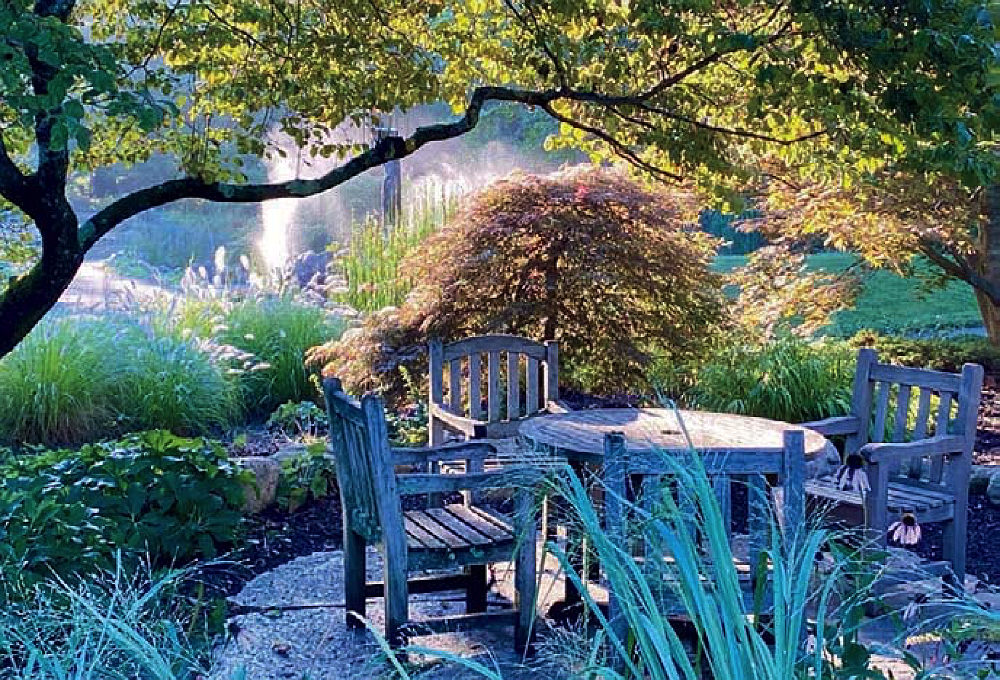
Elm Bank, a refuge from city life’s heat and crowds, offers picnicking and concerts amid botanical beauty.
Photograph courtesy of the Massachusetts Horticultural Society
At Elm Bank, the native Brit points to the teaching herb garden and seed-to-table plots, and expanded educational partnerships—attracting adults and children to classes, demonstrations, and workshops—as ways MHS can help “get people growing, rather than seeing horticulture as passive. I really want people to grow a plant, learn what to do and expect, to know what it’s like to put a seed in the ground and water it and see new life come up.”
Weezie’s Garden is always buzzing, not only with children and parents, but also with people eager to soak in the tangible and palliative features of nature after being indoors through the pandemic. And its meadow—of phlox, Joe Pye and butterfly weed, asters, and echinacea—is alive with birds, insects, and butterflies, especially monarchs, feeding off the varieties of milkweed that Pollard has been planting. Last year, a preschool program on site helped release butterflies, nurtured from eggs to caterpillars, to pupae. “You see these four- and five-year-olds,” she says, “and they are so excited by nature, to be here, to see the butterflies go free.”
